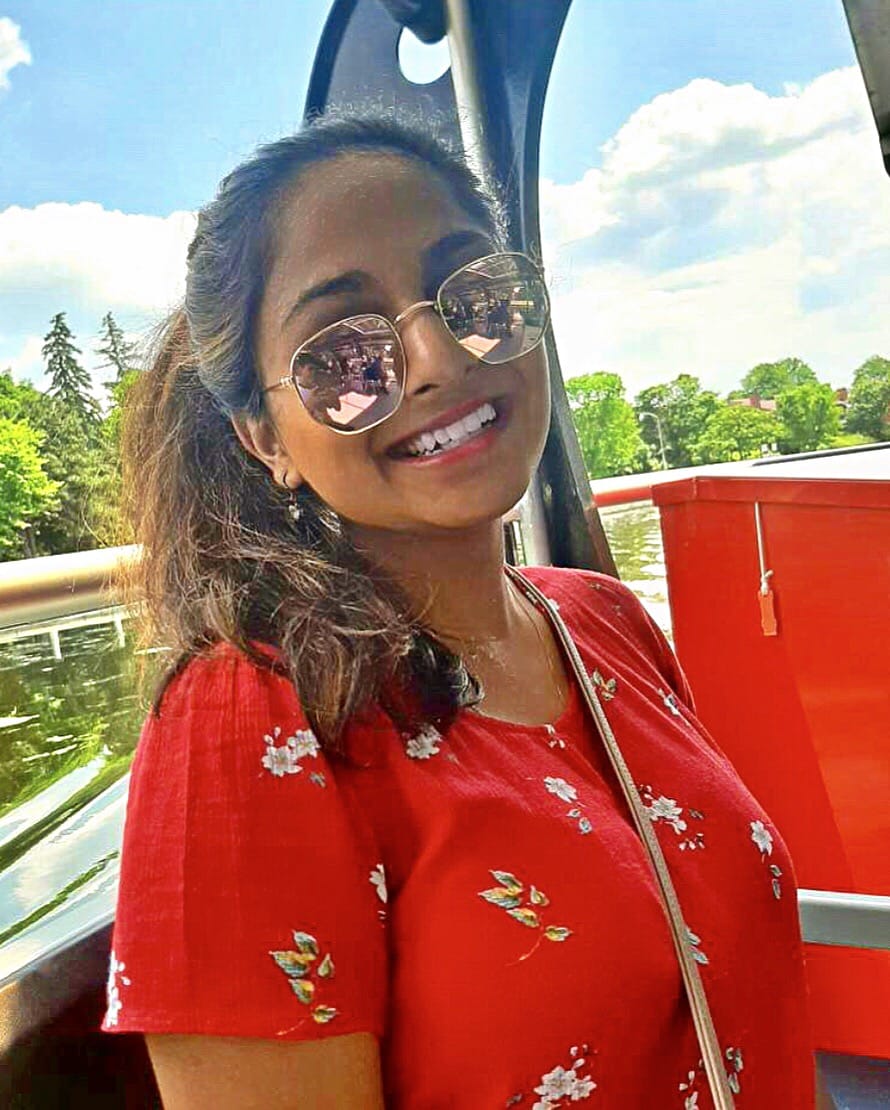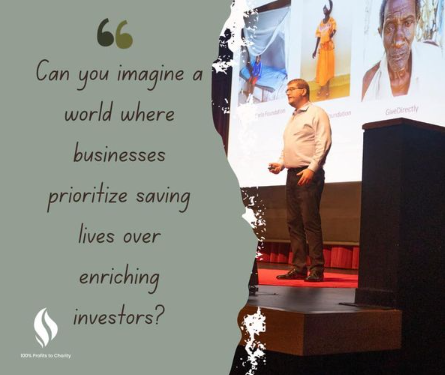This blog is by Madhu Sriram, chapter leader of One for the World, Virginia Commonwealth University (VCU). Madhu ran a successful Speed Giving Games event in Monroe Park, the campus hub for VCU. They had a turnout of 110 students, resulting in $1,100 being donated to the featured charities. During the event, ten students took The One for the World pledge.
Most of the time people donate without consulting a charity evaluator or researching the impact their money will have. Giving Games is a project of The Life You Can Save (TLYCS) designed to educate people about the transformative potential of high impact philanthropy—the importance of maximizing charitable giving by donating to impactful programs supported by strong evidence of their effectiveness.
It can be challenging to expect a high turnout in a classroom setting. Students have already spent hours attending lectures! We wanted to make learning about charities open to everyone in a fun environment. What better place to host a Giving Game than the campus hub of Virginia Commonwealth University, Monroe Park.
How did we run Speed Giving Games?
Our board ran a Giving Game through One for the World (OFTW), a university-based international non-profit organization that shares The Life You Can Save’s mission of eradicating global poverty and encourages students to pledge 1% of their future income to effective charities. We have a board of highly motivated and enthusiastic individuals who helped us run the event. We ran a Giving Game last semester in a lecture hall with forty-five people. This time, we wanted a higher turnout and to take the Giving Game outside the classroom. We felt the park would be the perfect place and the park management kindly allowed us to use it for free.
We decided to make the Giving Game picnic-themed. We had several board meetings prior to the Giving Game for everyone to become well versed in what each charity does, its cost effectiveness, successes and challenges. The charities we featured were The Against Malaria Foundation (AMF), Give Directly, and Project Healthy Children (PHC).
We created presentation boards and pasted powerpoint slides about each charity. We had six stations—a welcome table, a station for each of the three charities, a One For The World station, and a table for pledging 1%—as well as a food table. In order to make sure students learned about all the charities, we used raffle tickets. At each charity station, an officer handed out a ticket after the student listened to our pitch. The tickets were then collected at the food table in exchange for lunch.
At the welcome table, students were invited to attend our Giving Game by being given a $10 voucher to turn in at the pledge table with their vote at the end. We kept each pitch to three to five minutes, leaving room for questions. A question we were asked frequently was how efficient is Give Directly and its way of lifting families out of poverty; it faced some skepticism, but ultimately participants were quite surprised by the ten-year study and the program’s successes thus far. We had a spreadsheet to maintain a rotating schedule. Each officer had a different role, including helping at the welcome table, talking about the charities, One for the World, helping students pledge 1% on our website, giving out the raffle tickets, and helping at the food table. We also set up a few picnic blankets around the stations for students. We had a huge rainbow parachute that caught many passing students’ eyes.
The Outcome
We had a huge turnout of 110 students, which resulted in a total of $1,100 being donated to the three amazing charities, with Against Malaria Foundation receiving the highest number of votes. Ten students were inspired to take the 1% pledge. We felt it was really beneficial to have the Giving Game outside to involve people who otherwise might have not attended the event. It took no more than 15-20 minutes of their time and they were very receptive to One for the World’s mission! The Giving Game was a huge success that helped spread the message of effective giving.
________________________________________
A note from Kathryn
Questions? Please contact me at kathryn.mecrow@thelifeyoucansave.org.The Giving Games Project is always delighted to hear from people who are interested in running, sponsoring or hosting Giving Games. We are always especially happy to support innovative and creative models like the one designed by Madhu and her team! To keep in touch with us, you can subscribe to our newsletter here.
________________________________________
About Madhu 
Madhu is an undergrad student studying Philosophy and Medical Humanities. She is an aspiring doctor who deeply shares TLYCS' mission of eradicating global poverty and believes that we all have a moral obligation and an opportunity to help those who are underprivileged. She hopes to catalyze the effective altruism movement on multiple campus grounds and build a community of young, thoughtful philantrophists.



